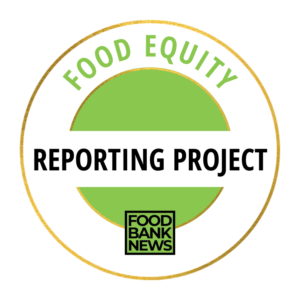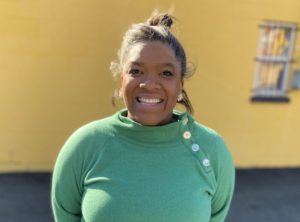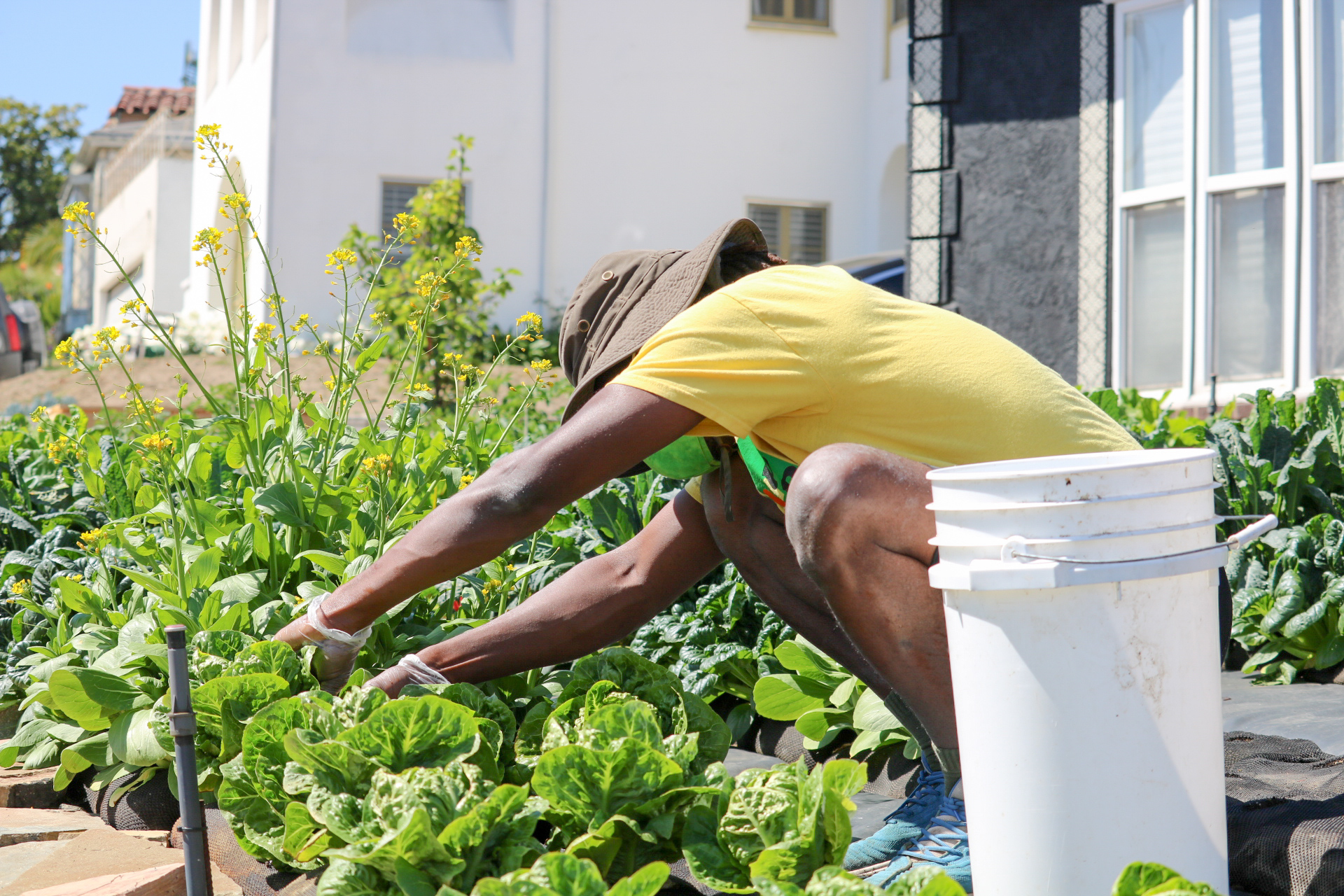In many communities around the country, equitable access to food often has less to do with opening a food pantry and more with starting a garden.
As the pandemic steers the national conversation around food insecurity to include the importance of nutrition and the impact of race on hunger, more attention is being paid to grassroots efforts, outside the food bank model, to provide sustenance to those in need. Mutual aid networks and community fridges may be the newest of these models, but they build upon ongoing initiatives to use urban gardens to address a multitude of food justice issues.

In Black communities especially, where the impact of discriminatory policies leading to billions in land and wealth loss still weighs heavily, efforts to connect with the land run deep, and in many ways, are favored over charitable initiatives like food pantries.
“Charity does not equal justice,” said Heber Brown III, Founder of the Black Church Food Security Network, in a 2020 interview with The Christian Century. After starting a garden in 2010 on the property of Pleasant Hope Baptist Church in Baltimore, where he is pastor, Brown expanded the project to include dozens of Black churches across the country, now feeding their communities through local gardens.
More secularly, three years ago in Los Angeles, Jamiah Hargins founded Crop Swap L.A. as a way for home gardeners to share their extra squash, beans and tomatoes with their neighbors. By the end of 2019, Hargins had developed a group of over 100 Angeleno greenthumbs who gave away their bounty.
When Covid hit, Hargins switched tactics. With $50,000 in city funding, he developed a concept in which residents of L.A.’s predominantly Black View Park neighborhood would grant him use of their otherwise unproductive lawns for growing food. Anyone living within two miles of View Park can pay $50 for a monthly membership that entitles them to a one-pound bag of freshly harvested and washed produce every week; currently one garden is operational and another is in the works.
Keeping the food close to where it originated was critical to Hargins’ vision. For starters, the less it travels to its intended eaters, the fewer nutrients the food loses en route. In addition, “View Park has had a lot of economic trouble and even though the median [household] income is about $90,000, residents still have to pay for everything in an increasingly expensive city,” Hargins said. “Prioritizing this neighborhood was important for me as a Black man who wants to show his community that he cares for his community. I’d hate to have done all this work only to have folks in [predominantly white] Santa Monica hear about it and buy all [the food] up.”

So far, 50 families have signed on for membership and seven part-time staffers keep Crop Swap’s micro garden growing. Hargins has consciously built long-term equity into every aspect of his program. A yard owner earns a 5 percent share of any revenue generated from their property and saves money, too, Hargins said, by converting water-hogging lawn to food production. Employees are paid $20 an hour, $7 more than the minimum for California businesses with fewer than 25 employees; they’re also entitled to annual bonuses tied to revenue. And 10 percent of all Crop Swap food is donated to a community fridge in adjacent Leimert Park, where the median household income is $56,000. “That’s part of our community ties,” said Hargins. “No need to be stingy about food.”
As he looks to expand his model into other neighborhoods — “As many as I can build out in 15 years,” he said — Hargins is also applying for fiscal sponsorship through an outside 501c3, to better solicit donations and grants related to agriculture and Black-owned businesses. In the meantime, he said, “People are thinking about their yards differently and we’re connecting to them on a deep level.”
Charlottesville, Va., has been contending with a multitude of justice related issues — food and otherwise — in a city that’s seen protestors run over at a white supremacist rally; furor over the removal of racist statues; and disproportionate impacts of the pandemic on its communities of color, who have fewer resources for food, housing, and other hallmarks of self-sufficiency. Tucked in around the University of Virginia and the city’s wealthier white neighborhoods are historically Black enclaves that face limited grocery options and gentrification closing in from all sides.

In Charlottesville as in many other urban areas throughout the U.S., food security rates have barely buckled in the last 40 years. So food justice organization Cultivate Charlottesville has looked for outside-the-box ways to address systemic inequities at the heart of hunger.
In its first iteration 11 years ago and under a different name, the focus was on school gardens, following the modern tradition laid down by Chez Panisse’s Alice Waters and her Edible Schoolyard project. This vision expanded in 2016, when another program within the organization applied for a USDA grant to forefront food justice work; what’s now known as the Food Justice Network advocates for more and better food policies and has made recommendations to the city to set aside area in parks for urban ag, and to create a position within the local government that’s concerned with food equity.
“If you’re looking for a healthy and equitable food system, obviously you need food, but you also need the intersection of everything that makes it accessible to people,” said Aleen Carey, Cultivate Charlottesville’s Outreach and Resource Program Director.
In 2018, the organization agreed to provide support for the Urban Agriculture Collective (UAC). This was a successful and popular community farm program on several public housing sites that was in danger of folding when the city decided to redevelop the spaces. UAC now comprises a third branch of Cultivate Charlottesville, growing 7,500 pounds of food a year on a temporary site that’s distributed to public housing residents at no cost; it’s reminiscent of New York City’s Farms at NYCHA, which runs farms on six public housing properties. Even through the pandemic, UAC has continued distributing produce, gratis, at six rotating sites.
UAC “does make a meaningful impact; you can come to the market and pick up everything you need for the week,” Carey said. UAC’s success, she said, allows the organization at large to “push more and more and say to the city, ‘If you back us, we can make significant change.’” — Lela Nargi
Lela Nargi is a veteran journalist covering food policy and agriculture, sustainability and science for outlets such as The Guardian, The Counter, Civil Eats, City Monitor, JSTOR Daily, Sierra, and Ensia. She’s also the author of science books for kids. Find her at lelanargi.com and @LelaNargi.
CAPTION ABOVE: Tending to a home garden that’s part of Crop Swap L.A.’s program. Credit: Yasser Nokoudy
Like what you’re reading?
Support Food Bank NewsConnect with Us:










